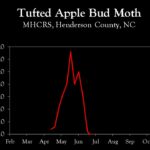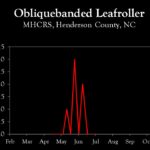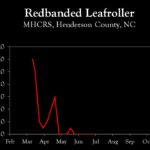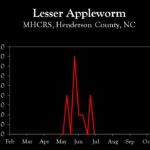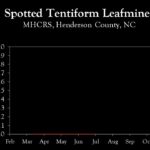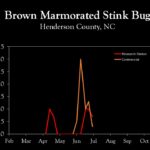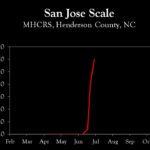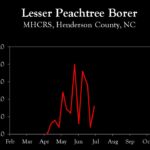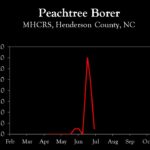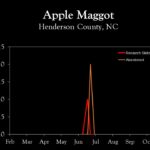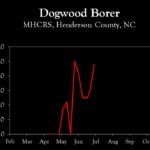WNC Orchard Insect Pest Populations – July 3, 2024
go.ncsu.edu/readext?1012480
en Español / em Português
El inglés es el idioma de control de esta página. En la medida en que haya algún conflicto entre la traducción al inglés y la traducción, el inglés prevalece.
Al hacer clic en el enlace de traducción se activa un servicio de traducción gratuito para convertir la página al español. Al igual que con cualquier traducción por Internet, la conversión no es sensible al contexto y puede que no traduzca el texto en su significado original. NC State Extension no garantiza la exactitud del texto traducido. Por favor, tenga en cuenta que algunas aplicaciones y/o servicios pueden no funcionar como se espera cuando se traducen.
Português
Inglês é o idioma de controle desta página. Na medida que haja algum conflito entre o texto original em Inglês e a tradução, o Inglês prevalece.
Ao clicar no link de tradução, um serviço gratuito de tradução será ativado para converter a página para o Português. Como em qualquer tradução pela internet, a conversão não é sensivel ao contexto e pode não ocorrer a tradução para o significado orginal. O serviço de Extensão da Carolina do Norte (NC State Extension) não garante a exatidão do texto traduzido. Por favor, observe que algumas funções ou serviços podem não funcionar como esperado após a tradução.
English
English is the controlling language of this page. To the extent there is any conflict between the English text and the translation, English controls.
Clicking on the translation link activates a free translation service to convert the page to Spanish. As with any Internet translation, the conversion is not context-sensitive and may not translate the text to its original meaning. NC State Extension does not guarantee the accuracy of the translated text. Please note that some applications and/or services may not function as expected when translated.
Collapse ▲ Codling Moth: As summarized in last week’s update, second generation codling moth is the key concern at this time. Egg laying in the southeast begins between 1400 and 1450 degree days (DD), and as of July 3 DD totals in Henderson and Cleveland County were 1370 and 1717. Ideally a first application has been applied in Cleveland County and similar elevations. In Henderson County and similar elevations, the optimum timing for a first application is July 5 or 6. However, in orchards with very low populations and where only a single application for the second generation is needed, delaying the application to 1600 DD will likely be sufficient.
Codling Moth: As summarized in last week’s update, second generation codling moth is the key concern at this time. Egg laying in the southeast begins between 1400 and 1450 degree days (DD), and as of July 3 DD totals in Henderson and Cleveland County were 1370 and 1717. Ideally a first application has been applied in Cleveland County and similar elevations. In Henderson County and similar elevations, the optimum timing for a first application is July 5 or 6. However, in orchards with very low populations and where only a single application for the second generation is needed, delaying the application to 1600 DD will likely be sufficient.
In orchards using mating disruption and having very low populations, the need for insecticides targeting codling moth are questionable. At most, only a single application is likely necessary.
Brown Marmorated Stink Bug (BMSB): In lower elevation orchards, we are getting closer to the emergence of first generation BMSB adults, which historically is the most damaging time for this pest. First emergence begins at approximately 750 DD. As of July 3, total cumulative DD in Cleveland and Henderson Counties were 632 and 496, respectively. Based on forecasts, BMSB emergence in Cleveland County is predicted to begin in about 10 to 12 days. In Henderson County and similar elevations, it’ll be at least 3 weeks or longer before emergence begins.
European Red Mite (ERM): Typically, orchards that have avoided ERM population build up by about July 7 have a low potential for mite problems the remainder of the year. While mite problems continue to exist in several locations, the threat should become less of an issue over the next week or so. Nonetheless, there are exceptions to the rule, so monitoring populations for the next couple of weeks should continue. It is noteworthy that most orchards that we have visited for mite collections have had good predatory mite populations.
Learn more about southeastern apple insect pests at the Apple Insect Management page.
2024 Average Weekly Trap Captures
| HENDERSON COUNTY | |||
| Insects per trap | |||
| Jun 19 | Jun 24 | Jul 2 | |
| Codling moth | 1.0 | 0.5 | 2.0 |
| Oriental fruit moth | 18.0 | 12.0 | 14.5 |
| Tufted apple bud moth | 1.0 | 0.0 | 0.0 |
| Redbanded leafroller | 0.0 | 0.0 | 0.0 |
| Obliquebanded leafroller | 0.0 | 0.0 | 0.0 |
| Lesser appleworm | 0.0 | 4.0 | 0.0 |
| Apple maggot (research orchards) | 1.0 | 0.0 | 0.0 |
| Apple maggot (abandoned orchard) | 0.0 | 2.0 | 0.0 |
| Brown marmorated stink bug (commercial) | 1.0 | 1.3 | 0.3 |
| Brown marmorated stink bug (unsprayed research orchard) | 1.0 | 1.0 | 0.7 |
| Spotted tentiform leafminer | 0.0 | 0.0 | 0.0 |
| Dogwood borer | 25.0 | 31.0 | 48.0 |
| Peachtree borer | 14.0 | 10.0 | 1.0 |
| Lesser peachtree borer | 14.0 | 2.0 | 8.0 |
| San Jose scale | 20.0 | 200.0 | 165.0 |
*Note that these averages illustrate only the timing of insect emergence and fluctuations in populations, and are not representative of population levels in any given orchard. The only way to have an accurate assessment of an individual orchard’s populations is to set up traps in that orchard.
2024 Accumulated Degree Days
| HENDERSON COUNTY | ||||
| Jun 19 | Jun 24 | July 2 | ||
| Codling moth (Biofix: April 15) | 1010 | 1128 | 1326 | |
| Oriental fruit moth (Biofix: March 15) | 1614 | 1756 | 1994 | |
| Tufted apple bud moth (Biofix: April 15) | 1320 | 1462 | 1700 | |





